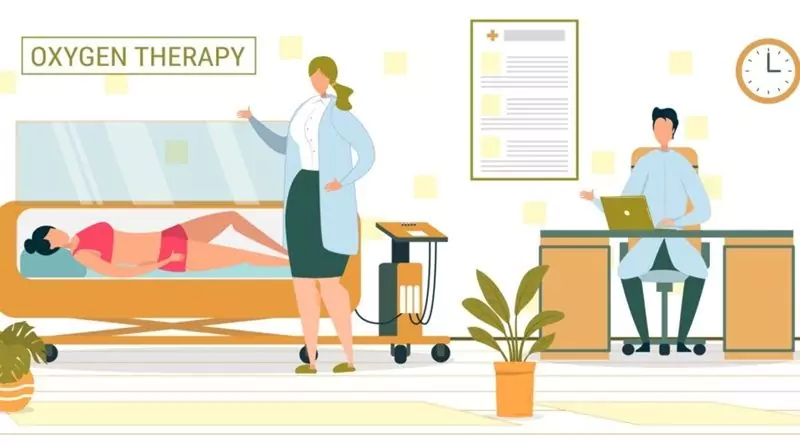Hyperbaric Oxygen Therapy Patient Handbook
“Hyperbaric oxygen” is a therapy with very unique healing ability. Hyperbaric oxygen therapy is the administration of oxygen under pressure to effect tissue healing by supplying the cells with increased levels of oxygen. It is administered mostly as a patient lies comfortably in a pressurized chamber, while breathing oxygen.
The pressure inside the chamber causes the oxygen you breathe to be dissolved at greater levels in your blood in the same way that pressure causes carbon dioxide to be dissolved in soft drinks. The net effect is to increase oxygen concentrations within the blood, which is then driven into the tissues that require it for healing. Patients usually find this therapy to a very pleasant experience and most report feeling energized and relaxed afterwards.
Medical review
Potential hyperbaric oxygen therapy patient is required to have a medical review before commencing treatment. Each prospective patient is assessed to ensure that he/she is an appropriate candidate for HBO therapy. Patients must not receive hyperbaric oxygen therapy in the following situations;
– A cold, the flu, nasal or chest congestion,
– Early pregnancy,
– Ear or sinus infection,
– Pneumothorax,
– Severe emphysema with bullae,
– Medications.
Bladder emptying
The hyperbaric oxygen therapy patient should empty his/her bladder before the therapy starts.
Clearing the ears
As the chamber is pressurized, the eardrum is pushed inward. When the patient feels pressure building in his/her ears and or sinuses, he/she should equalize the pressure in the ears. Pressurization usually takes about 5 minutes so the patient may have to clear the ears several times during this phase. It is recommended that patients clear their ears by equalizing the pressure about every 30 seconds during the ‘pressurization phase’ of their initial chamber sessions.
This can be uncomfortable, if the patient do not equalize the pressure in the middle ear. Generally any discomfort experienced by a patient when commencing treatment is overcome after becoming familiar with the pressure and learning the pressure equalization technique.
Methods of equalizing pressure in the ear
Valsalva Maneuver
– Hold the nose closed and close the mouth,
– Lift the back of the tongue toward the roof of mouth,
– Attempt to blow through the nose (short and sharp) while holding it shut.
Other methods
Patients can try to yawn or swallow. Another way is to pull and stretch the external ears whilst attempting to yawn, then repeat holding the nose and attempting to blow.
The patient will have to repeat this procedure several times during the pressurization phase of treatment. If the patient have difficulty with ears, he/she should not wait until they hurt.
Many patients who have difficulty equalizing or are experiencing discomfort, usually find the way with a bit of daily practice to overcome this difficulty within a few sessions. In addition, there are also special earplugs available to try if the patient have trouble equalizing the pressure on his/her own.
The chamber is filled to 1.4 ATA or higher to attain the correct atmospheric condition to maximize and facilitate the benefits of 100% oxygenation. If the patient is wearing the oxygen mask, he/she should not remove or alter the position of the mask. Because, the purpose of treatment is to administer pure oxygen, which is being delivered through the mask.
Usually the patient is free to change the position in the chamber to stay comfortable. The patient may take in a book, or a magazine. It is recommended that the patient does not smoke while undergoing treatment, or any time for that matter, as it interferes with the body’s ability to utilize oxygen.
These items are not allowed inside the chamber:
– Cigarettes, lighters, or matches,
– Any device that creates a spark,
– Sharp objects.
When the treatment is finished the chamber will be depressurized. This takes about 5 minutes. The patient, will not be required to clear the ears during the decompression phase. Ears will usually clear automatically.
References
La Jolla Longevity Clinic: HyperbaricMed.Com, “Frequently Asked Questions: Patient Handbook”
Mayo Clinic: Tests and Procedures, “Hyperbaric oxygen therapy”
Undersea and Hyperbaric Medical Society (UHMS): “Hyperbaric Oxygen Therapy Indications” 14th Edition

